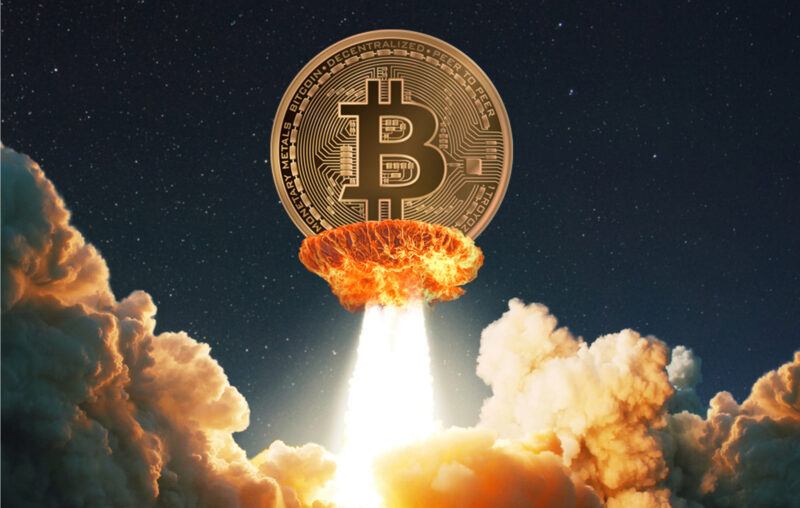Was Satoshi Nakamoto Right about Bitcoin Payments?

On October 31, 2008, Satoshi Nakamoto published a white paper entitled “Bitcoin: A Peer-to-Peer Electronic Cash System.” Thirteen years have passed. What sorts of payments are being conducted using Nakamoto’s cash system? Has bitcoin met Nakamoto’s expectations?
Let’s be clear. In the white paper, Nakamoto plainly meant bitcoin to be used for online payments, not speculation. In particular, in setting up the context for explaining his electronic cash system, Nakamoto contrasts it with credit card networks.
He begins by invoking “commerce on the Internet” and its reliance on “trusted third parties to process electronic payments.” These institutions “cannot avoid mediating disputes” and so online payments are “reversible.”
In these excerpts Nakamoto is painting a picture of online stores being connected to their customers via the Visa and MasterCard card networks which — by the time Nakamoto was writing — had long since obtained a near stranglehold over online shopping. By reversibility, Nakamoto is referring to how card networks allow card owners to dispute purchases, the card company “charging back” the merchant if deemed at fault.
Did Nakamoto’s vision for bitcoin come to fruition?
In one sense, Nakamoto missed wildly. Thirteen years in, Bitcoin isn’t used much for payments. Rather, it is almost entirely used as a speculative vehicle — one that offers a tantalizing potential for price appreciation (and depreciation). There was nothing about speculation in Satoshi’s white paper.
But if Satoshi didn’t anticipate bitcoin being mostly used for speculation, he was right about one thing.
Unlike many bitcoin enthusiasts, Satoshi did not think his electronic cash system was destined to replace regular money. The card system works “well enough for most transactions,” he admitted in the white paper. Rather than overthrowing the system, Nakamoto seems to have envisioned bitcoin occupying a back-up payments role for online merchants.
This part of Satoshi’s vision for electronic cash has been borne out. Though not its predominant function, Bitcoin does get used from time to time as a payments medium. Some of this is for illegal products such as drugs and child pornography, but there are licit uses as well. A quick survey of law-abiding online stores shows that some give customers the option of paying for bitcoin along with cards and PayPal. Once in a while one even finds a crypto-only retailer, but it’s rare.
And so bitcoin does seem to be living out Satoshi’s role as some sort of niche payments back-up.
Satoshi’s white paper fleshes out what sort of back-up role he thought bitcoin might play. Because the card networks cannot avoid “mediating disputes,” and mediation requires resources, the costs of using cards is high. Satoshi believes that these transaction costs prevent buyers and sellers from making “small, casual” transactions.
In addition to small transactions, Satoshi outlined another back-up role for bitcoin payments. According to Satoshi, the reversibility of a card payment gives rise to fraud. An unscrupulous buyer can purchase digital goods, wait for them to arrive by email, and then reverse the transaction. They end up keeping both the money and the goods, leaving the merchant out of pocket.
Bitcoin transactions are irreversible. If a merchant expects a card user is likely to commit chargeback fraud, she can ask to be paid with bitcoin instead.
Was Nakamoto right?
The small amount of legal bitcoin retail payments that we do see don’t really conform with Nakamoto’s vision. Bitcoin fees have been quite high, so small bitcoin transactions aren’t economically plausible. At the same time, transaction sizes on the card networks are coming down, which makes cards better for small purchases.
As for reversibility, consumers show no sign of tiring of their love for cards, particularly the ability to contest transactions, which provides peace of mind.
When online stores do accept bitcoin, it is often as a last resort. If a law-abiding business has failed to get card network access, crypto is often their only choice of connecting with a clientele. RocketStars, for instance, is a porn website that hosts kinky material. It was built specifically to avoid card processors that might censor material over concerns about damaging the card networks’ brand. RocketStars relies on crypto for payments.
The online kratom and salvia divinorum industries also rely on bitcoin and other cryptocurrencies. Visa and MasterCard refuse to process payments for businesses selling these legal but controversial drugs.
Lastly, white supremacists who publish legal but repellent material have been banned by PayPal, and often struggle to find card processors willing to hook them up to the card networks. They, too, have turned to crypto.
So rather than Satoshi’s reversibility or small transaction, it is outright card network censorship that drives licit business towards adopting cryptocurrency payments.
There is a second type of adopter. From time to time, large online vendors that have card network access also choose to accept bitcoin and other cryptocurrencies. Japanese online retailer Rakuten accepts it. So do sports teams like the San Jose Sharks and the Oakland Athletics. Tesla accepted bitcoin for a few months and Microsoft a few years.
Why would a mainstream online retailer accept cryptocurrencies like bitcoin when most people will just use their MasterCard or Visa card anyway?
The calculus behind their decision works like this. A large percentage of the public holds cryptocurrencies for speculative purposes. Speculators who hold cryptocurrency all appreciate good news, since that can help push the value of their speculation higher. By announcing that bitcoin will be an accepted payment option, a retailer can get free positive engagement from the cryptocurrency community. Even though it is unlikely that anyone will actually use bitcoin for making purchases, the extra public relations that the company garners more than outweighs the initial costs of setting up a crypto payments gateway.
When the announcement effect has worn off after a year or two, the company quietly discontinues bitcoin payments. It’s just a marketing stunt, writes Marc Hochstein, or a form of affinity marketing.
The calculus of this marketing stunt doesn’t always work out. With bitcoin being increasingly linked to negative issues such as damaging the environment, the marketing benefits of bitcoin acceptance are far from clear cut.
In the end, Satoshi was correct that card systems work “well enough for most transactions” and thus bitcoin had but a bit part to play in payments. But he was wrong about bitcoin being useful with retailers for small payments and non-reversibile retail payments. Instead, bitcoin has become a payments system of last resort for legal businesses censored by the card networks. And in the case of large companies that do have card network access, it is bitcoin ‘announcement effects’ that are sought after.










